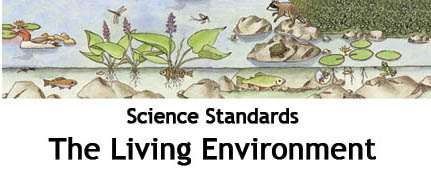

Students will understand and apply scientific concepts, principles, and theories pertaining to the physical setting and living environment and recognize the historical development of ideas in science.
The continuity of life is sustained through reproduction and development.
“It is essential for organisms to produce offspring so that their species will continue. Patterns of reproduction,
growth, and development of an organism are stages in its life cycle. Life cycle stages are sequential and occur
throughout the life span of the organism. The characteristics of the cycle of life vary from organism to organism. Note: Younger students may have difficulty in recognizing the continuity of life. Using organisms with a short life cycle as examples will be important in getting the concept across. It is important for younger students to observe life cycle changes in selected animals.” From the Elementary Science Core Curriculum Guidelines
Describe evidence of growth, repair, and maintenance, such as nails, hair, and bone, and the
healing of cuts and bruises.
4.2a Growth is the process by which plants and animals increase in size.

